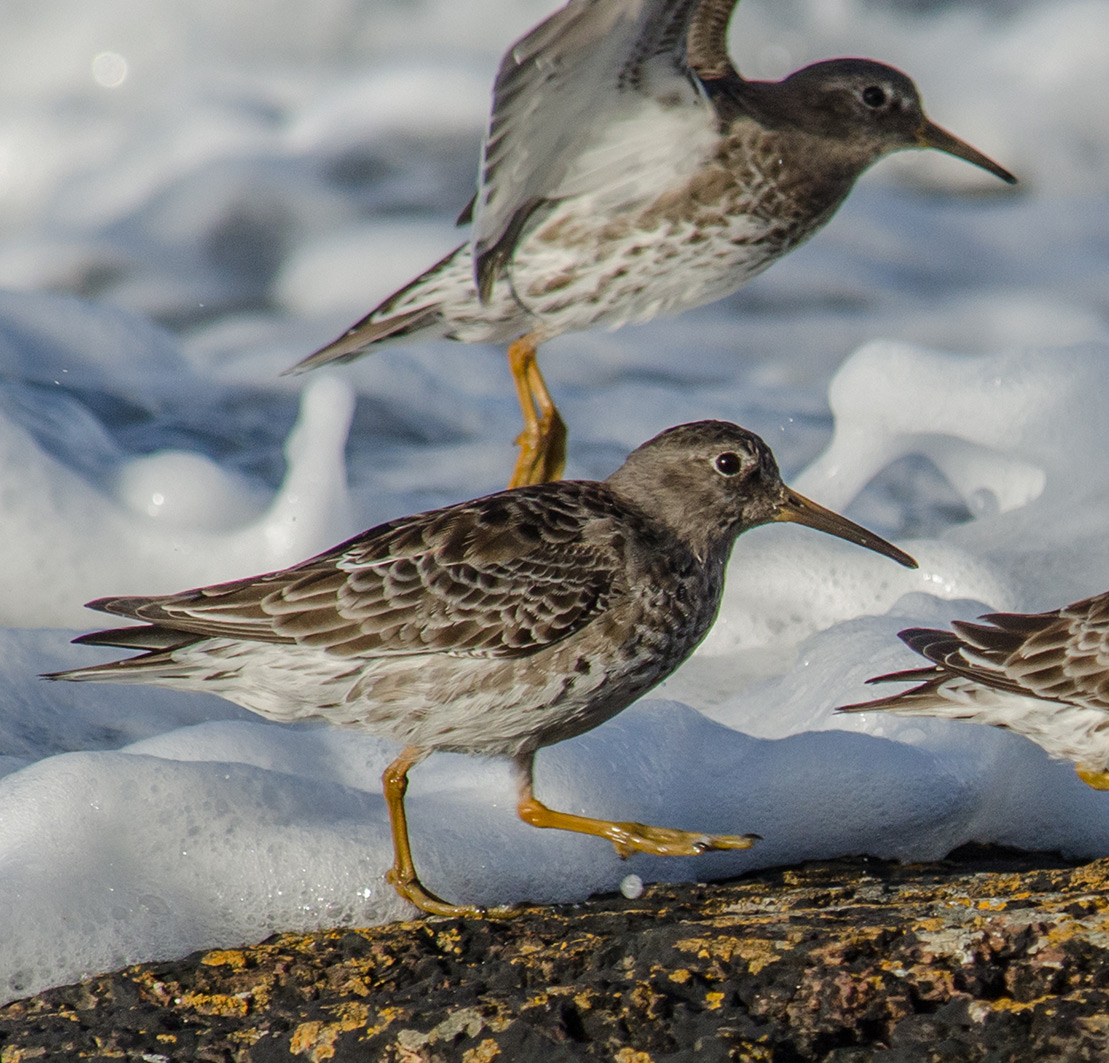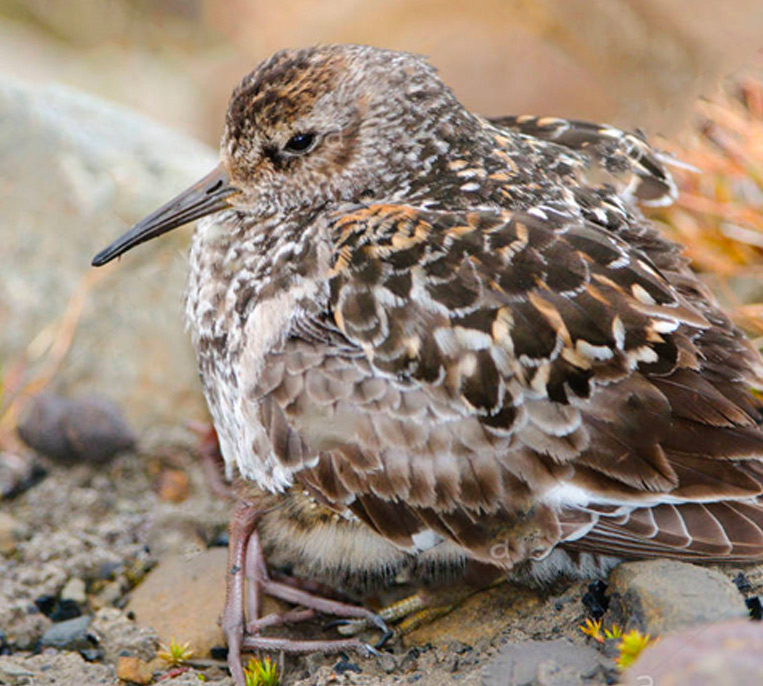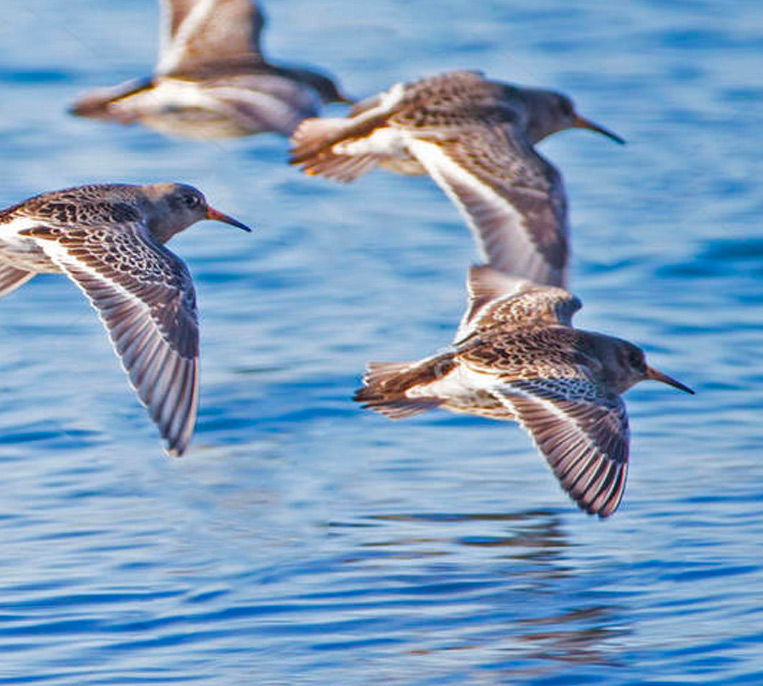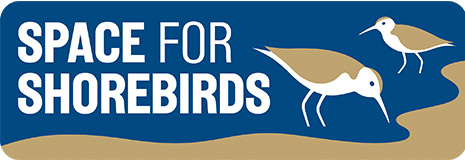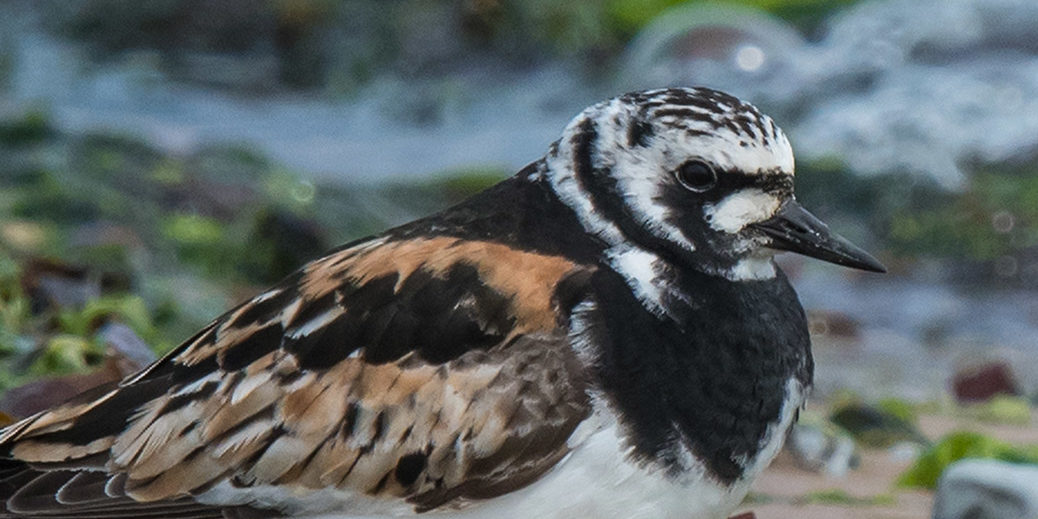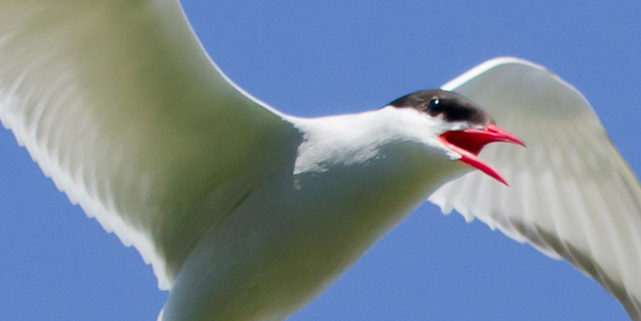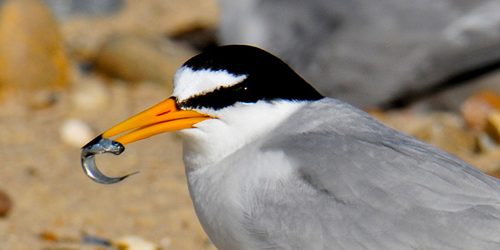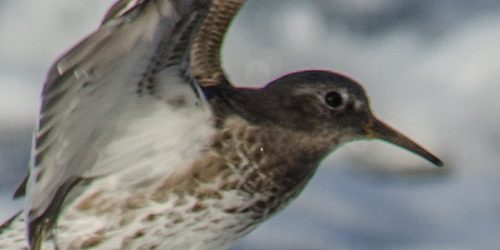The Turnstone's Tale
I spend every winter between October and March on the Northumberland coast, it’s warmer here and there is plenty of food. I tend to use the areas of rocky shore pushing over stones and seaweed to find food like small snails, worms, lava and insects. I sometimes accidentally eat small bits of plastic because it looks like food, it’s really bad for me though. You might find this disgusting but I also eat rotting meat if I can find it, it’s an easy meal!
I don’t mind people if they give me space, especially if there is food like fisherman’s bait, but getting too close and fast movements scares us. Most frightening of all are the dogs which seem like they want to catch us.
Me and the other turnstones spend a lot of time trying to get enough food to survive everything the Northumbrian winter throws at us. When we can’t get food we spend the time resting and preening to make sure our feathers are in good condition. Our lives like other shorebirds really depend on the tides. When the tide is out it means there is lots of space to find food, but when the tide is in we just try to rest and stay safe.
Can you believe in April I fly all the way to Greenland to nest. Some of the other turnstones fly to Canada, Svalbard (a group of islands to the north of Scandinavia) or the coast of Scandinavia to nest and have chicks. It’s worth it as there is loads of food up there during the short summer, plus that far north it’s light almost the whole time which means we can keep finding food.
I pair up with a male turnstone and I choose a nest site on the tundra or bare gravel. We just make a shallow scrape so the eggs are out of the wind and that’s it, that’s where we nest and I lay the eggs. If I’ve been able to stay strong and find plenty of food during the winter I might lay as many as five. It takes just over three weeks for our eggs to hatch, but we have to sit on them to keep them warm, even when it’s raining or blowing a gale, as it often does that far north!
Our chicks are amazing! Well camouflaged and able to get up and about after just a few hours and starting finding their own food. We just try to keep them safe from skuas, foxes and gulls. Our job is done when they can fly, we can then head home.
Some turnstones spend the winter much further south, even along the African coast, but I always come back to the Northumberland coast, it’s the only place I know for getting through the winter.
Spoken Audio by Catherine Gray of the Northumberland Coast AONB Partnership.
Bird recordings by Stanislas Wroza.
Hear the call of The Turnstone
Photo by Tim Melling
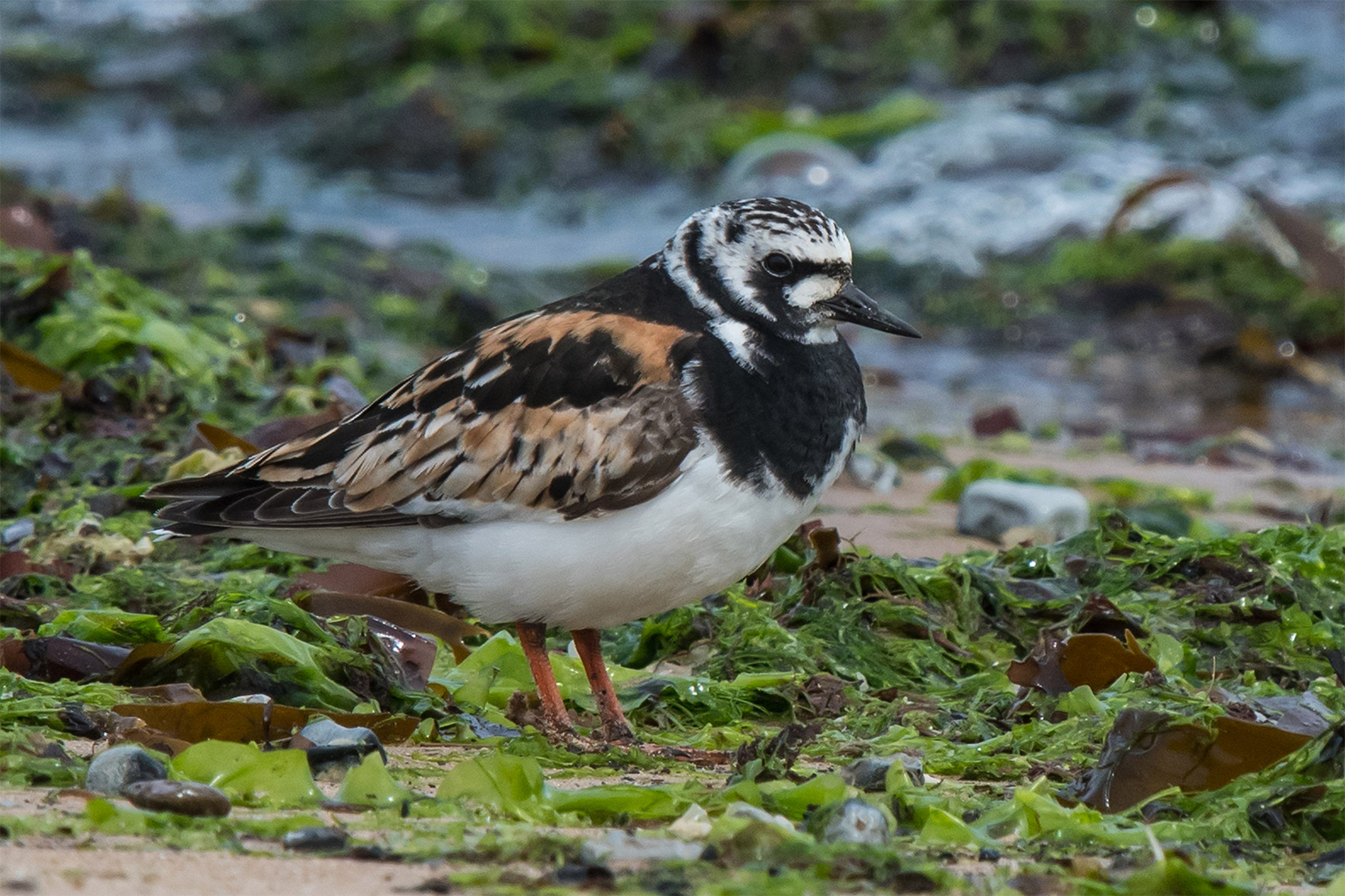
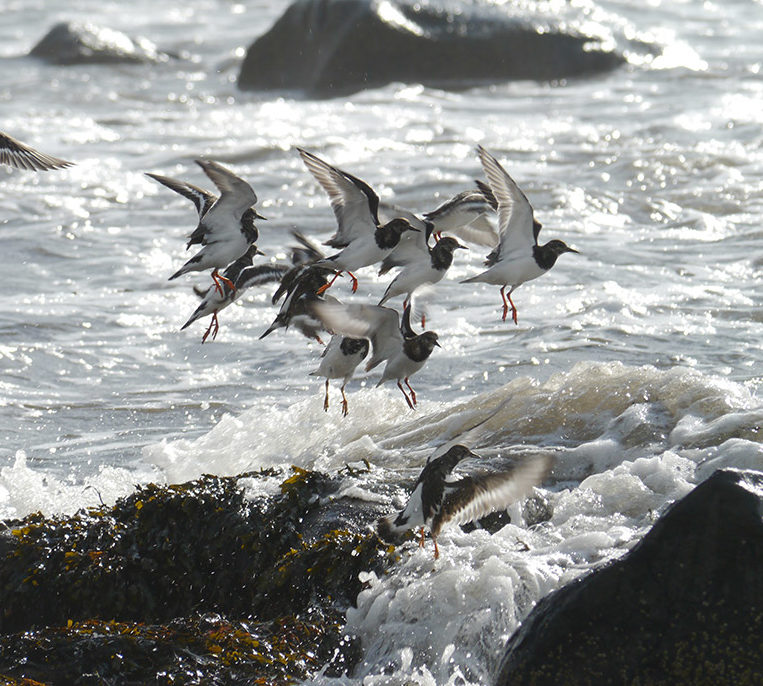
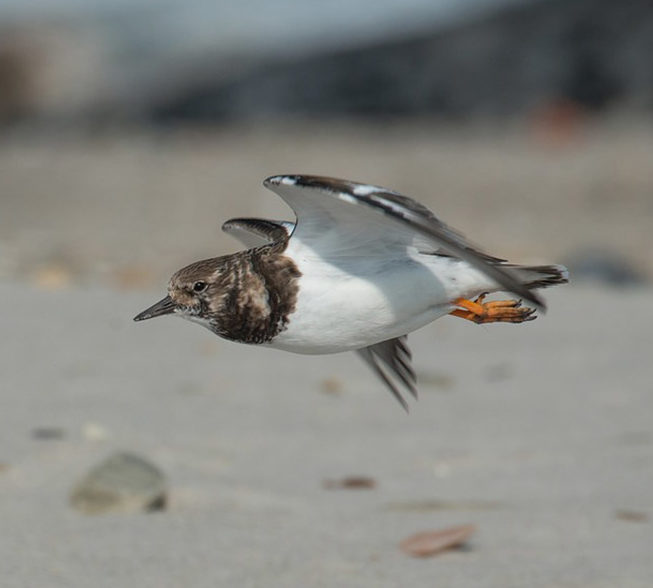
The Arctic Tern's Tale
I am a record breaker, an amazing global traveller, my migration is the longest in the whole world. In a single year I travel 22,000 miles and deal with all the storms and challenges that the oceans can throw at us. I travel from the edge of the pack ice in Antarctica following the coastline of Africa, then onto western Europe to arrive here in Northumberland to breed in May near the Long Nanny Burn in Beadnell Bay. All our efforts travelling the oceans are to get to this one special place to breed at the right time. I pair up with my mate and I lay up to three eggs in a very simple scrape in the sand in a colony with lots of other arctic terns. It’s a very noisy place!
The most important food for our chicks are the silvery sandeels. When there are enough sandeels for us to catch then our chicks will grow to be strong and healthy and will be able to fly at around three weeks after hatching.
The other big concerns for us are high spring tides which can wash away our nests and being scared away by people and their dogs. We are very lucky though as we get help from the National Trust Wardens who try to keep us safe, but please look out for us and give us lots of space and follow the signage. After July our colony on the beach becomes quiet again as the chicks can fly off and begin to learn to hunt for food themselves. We can then begin our long ocean journey once again, feeding as we go, heading down the west coast of Europe, onto the African coast, then all the way down the Antarctic pack ice in time for their summer starting.
Note: Telling the difference between an arctic tern and a common tern can be tricky. Both are found on the Northumberland coast. In the arctic tern look for our blood red bill, long tail streamers and when you see our wings with the light behind, our flight feathers are translucent.
Spoken Audio by Catherine Gray of the Northumberland Coast AONB Partnership.
Bird recordings by Stanislas Wroza.
Hear the call of The Arctic Tern
Photo by Iain Robson
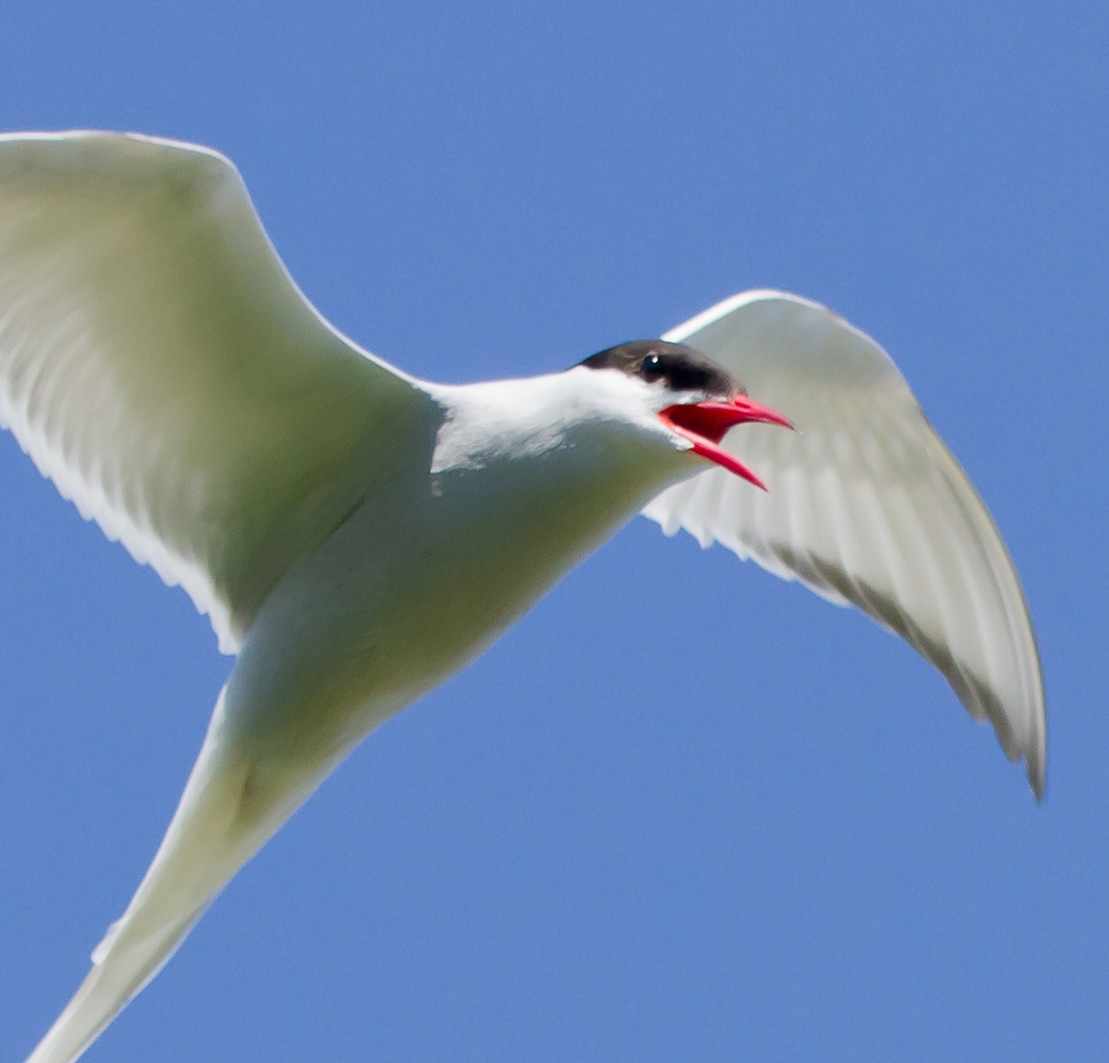
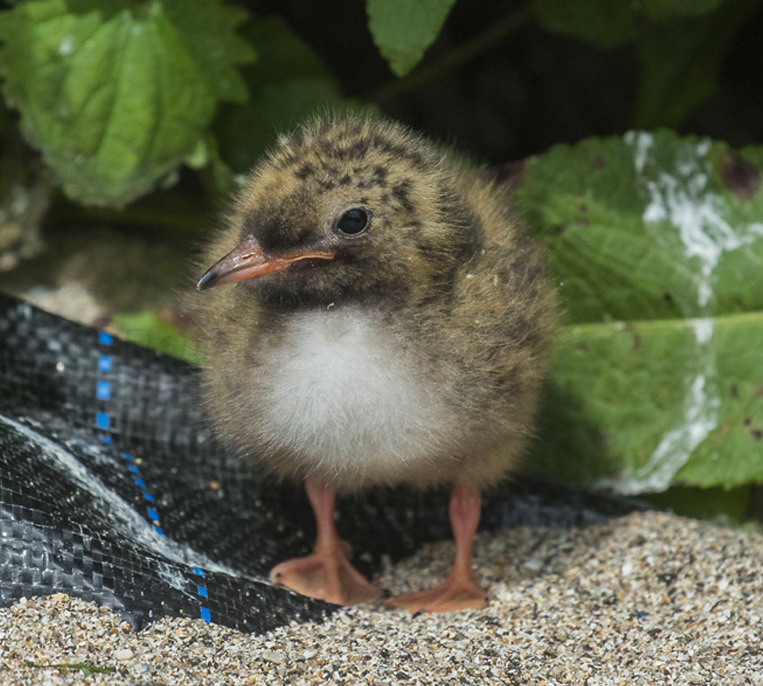
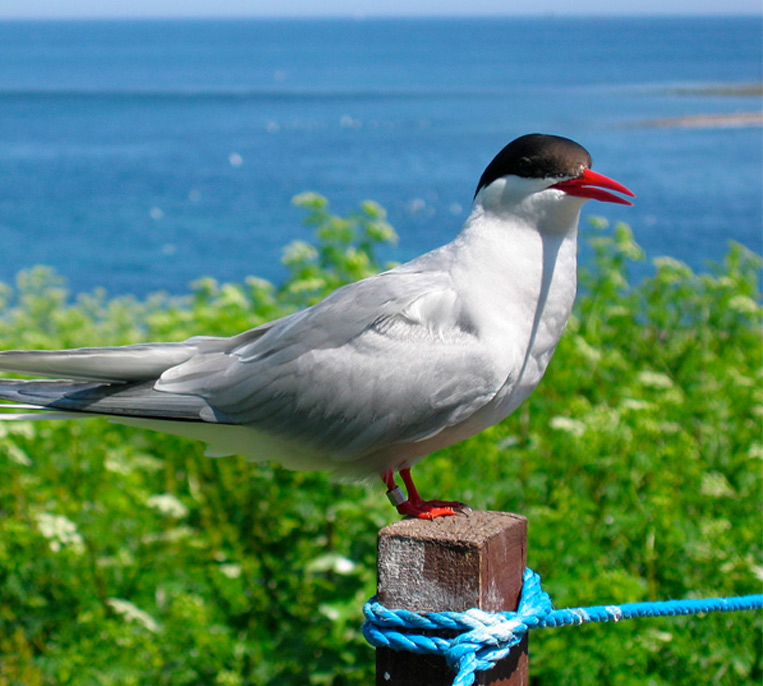
The Little Tern's Story
I’m much smaller than the other terns and seabirds but I still make a huge journey every year to get to Northumberland. I travel all the way from the west African coast, along the west coast of Europe to here in Northumberland in May ready to breed on Beadnell Bay.
I pair up with a mate, we have a courtship that includes an aerial display and the gift of a fish! We nest very close to the arctic terns, they are a rowdy bunch, but there is safety in numbers because they help to defend the colony from nest predators.
I lay 2 or 3 eggs in a simple scrape in the sand and shingle. We have to sit on the eggs for around three weeks braving any storms that come our way before our chicks hatch, then we need to keep our chicks fed and warm even when the weather is bad.
I can dive for fish in very shallow water because I’m so small, this also means that I don’t compete as much for food with the other bigger terns, like the arctic terns.
Our nest and chicks are very precious but they are vulnerable to predators and high spring tides, which can wash away our nests. We can be easily disturbed by people and particularly by their dogs, so please watch out for signage when on Beadnell Bay and please remember to give us space!
After three more weeks all being well our chicks will have grown and are able to fly and learn how to find food for themselves. We then start heading back on our long journey at the end of the summer. We feed as we go, back down the west coast of Europe and on to Africa.
Spoken Audio by Catherine Gray of the Northumberland Coast AONB Partnership.
Bird recordings by Stanislas Wroza.
Hear the call of The Little Tern
Photo by Kevin Simmonds
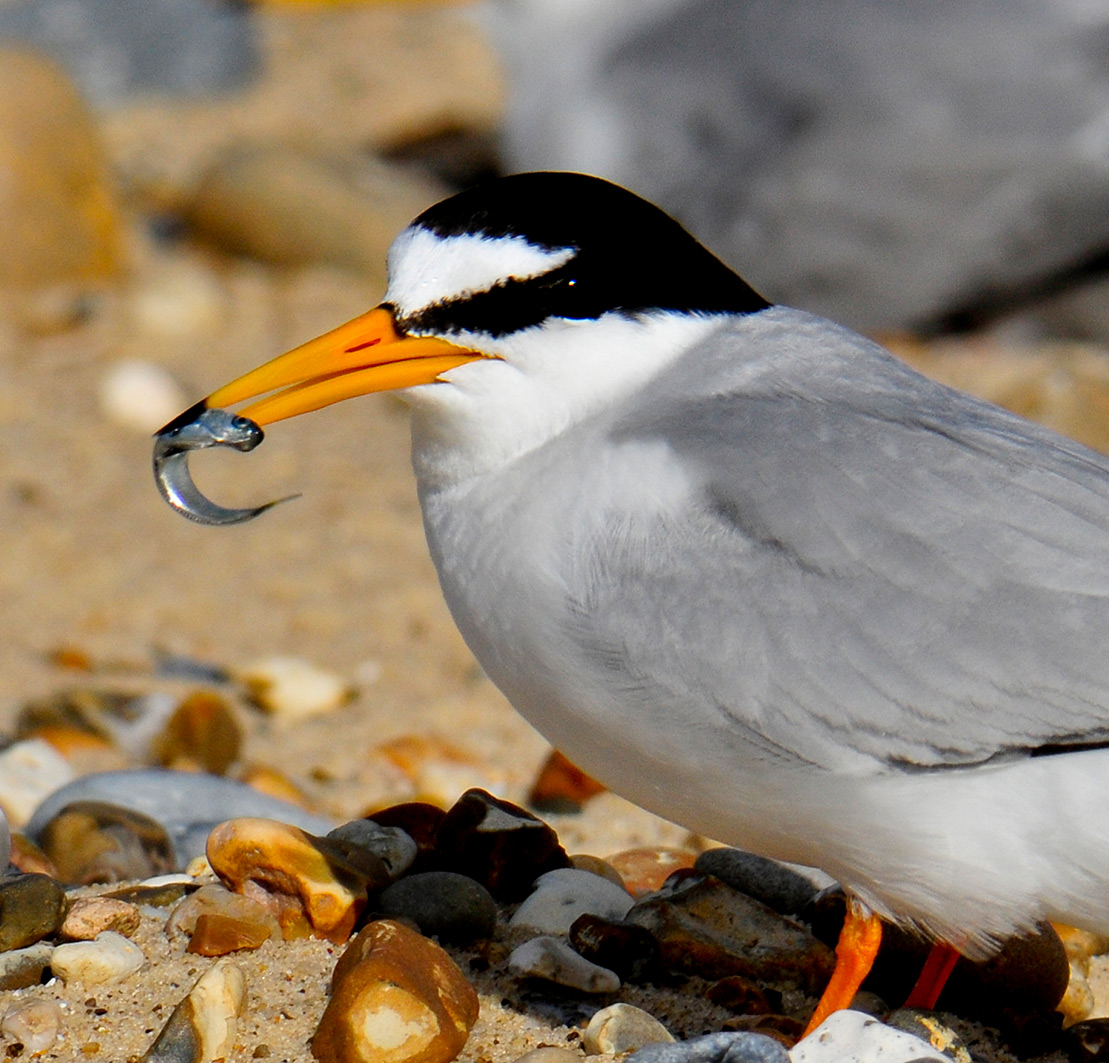
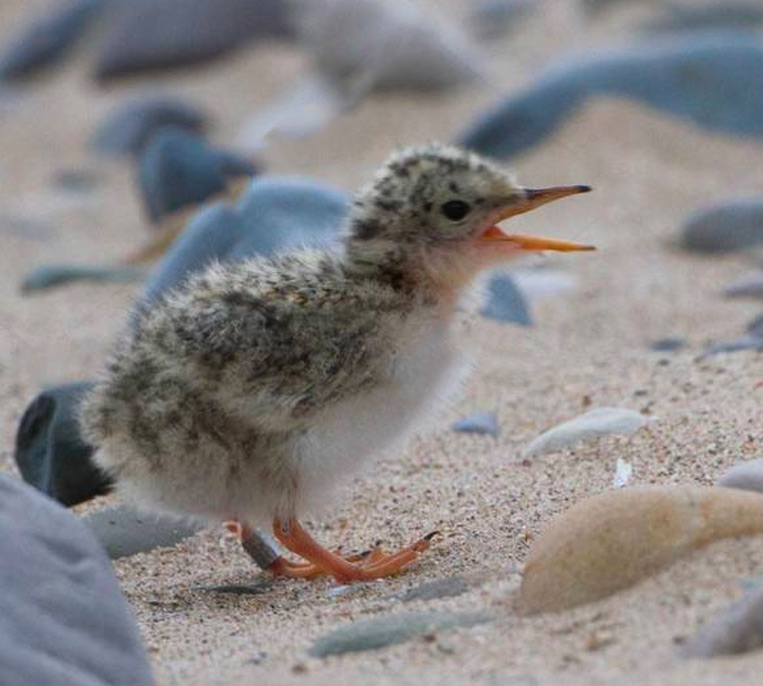
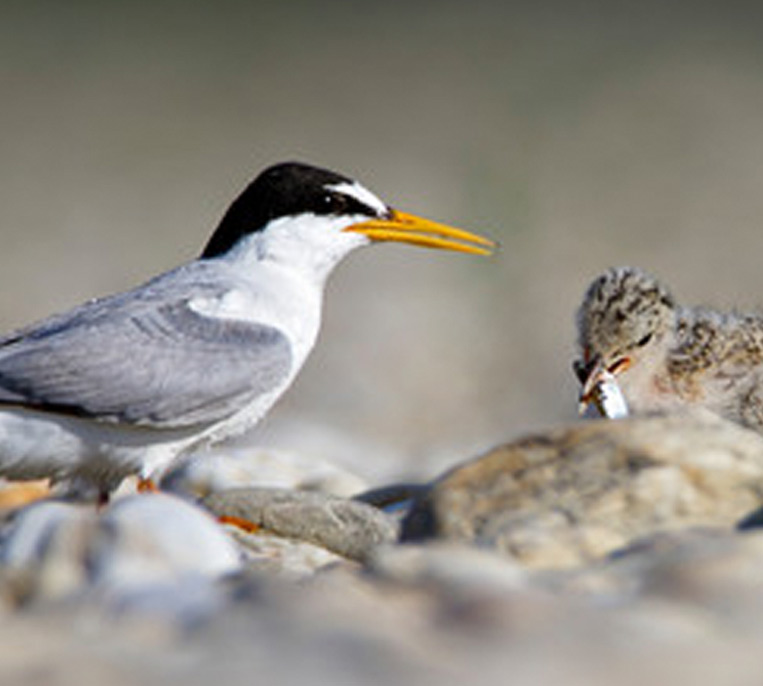
The Purple Sandpiper’s Story
I always have the sound of the waves crashing around me as I hardly ever move away from the water’s edge. That’s where I live my life, right on the edge between the land and the sea. I’m proud that out of all of the wading birds on the Northumberland coast it’s us, the purple sandpipers that never leave the edge of the shore.
I like to be in a group of sandpipers to make us feel safe, or I stay close to a group of turnstones. When the tide comes in I roost on an island, like Coquet Island, but when the tide starts to go out that’s when I get busy feeding again.
I’m more frightened of people than the turnstones are, but we are both really scared of dogs, especially if they are running around. The problem is that our food is only found on the edge of the shore and if I get too scared because of dogs or people I have nowhere else to find food.
Finding a safe place to roost is important, because when I’m not feeding it’s best to save energy and rest so I can get through the long winter. As well using islands to roost we use structures made by people like the staithes at Blyth.
The food I need is all found in that small section right next to the waves, including small mussels, periwinkles, snails, worms and small crabs and other crustaceans. It does take a long time to find them though so I have to spend most of every day just finding enough food.
Our best place in Northumberland to find food is Stag Rocks to the north of Bamburgh beach.
In April every year we fly all the way to Scandinavia and Svalbard (which are islands to the north of Norway), way up north on the tundra and moors, where the days are long and there is lots of food like spiders, worms, aphids, beetles, springtails, and flies. I also eat some seeds, berries, leaves, and plant buds.
I think it’s special that we get back together with the same partner year after year in the same territory to make a nest. I usually lay about 4 eggs if I’m fit and I’ve been able to find lots of food during the winter. The chicks hatch after about three weeks after they have been laid, we take turns keeping them warm.
It’s amazing that after only two hours after hatching that they are up, running and finding food for themselves. Even though they are just little balls of fluffy down, though they are really well camouflaged, which makes sure that they stay hidden and safe.
While it’s good to go up north to Scandinavia, the summer lasts only for a short time that far north, so in October it’s great to get back to the Northumberland coast which is where I belong.
Spoken Audio by Catherine Gray of the Northumberland Coast AONB Partnership.
Bird recordings by Stanislas Wroza.
Hear the call of The Purple Sandpiper
Photo by Tim Melling
